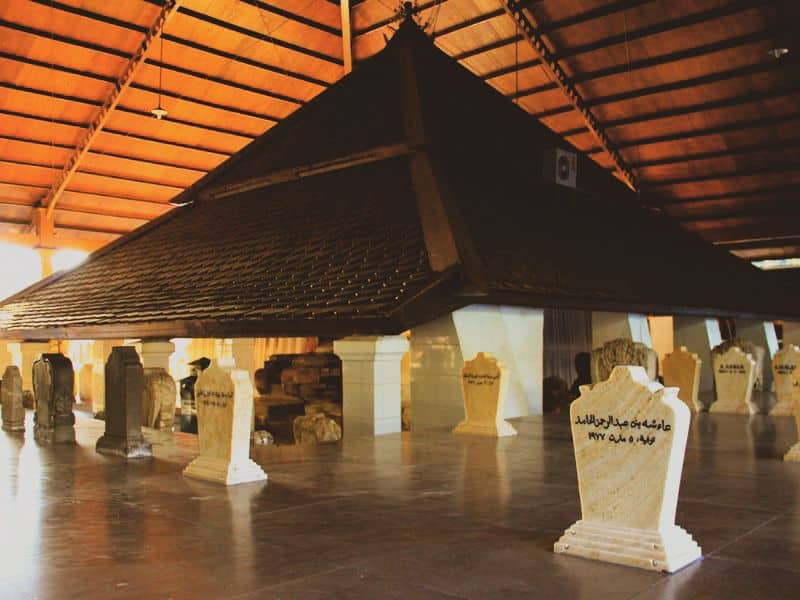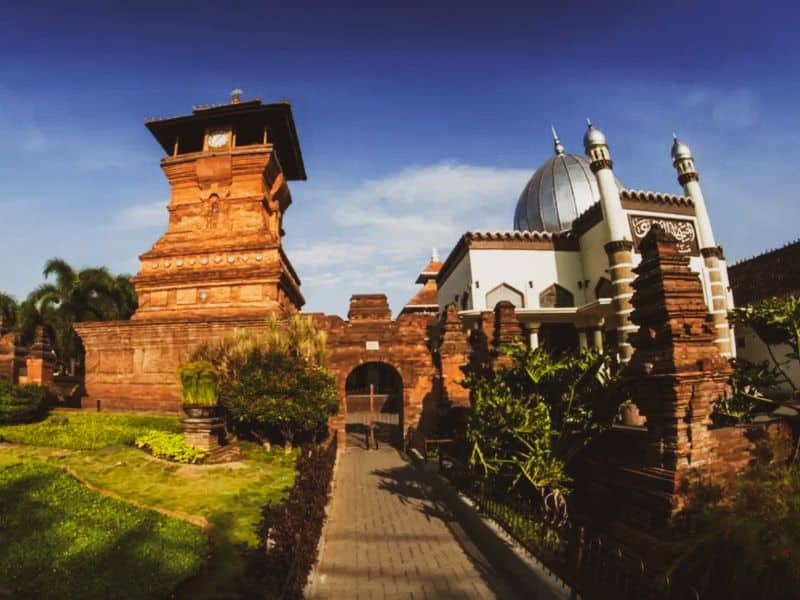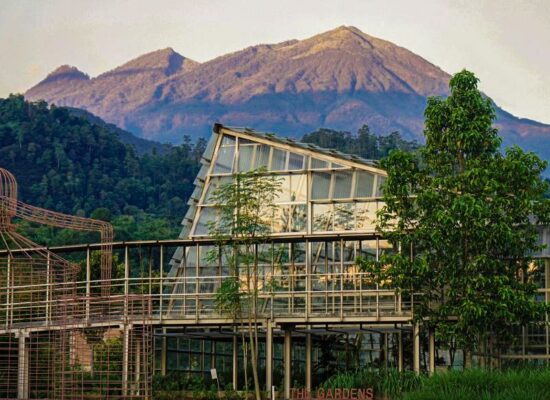The tradition of the Songo guardian pilgrimage is a tradition that has existed for a long time among Javanese people. This tradition is a form of respect and gratitude to the Wali Songo who spread Islam in Java.
Pilgrims usually pray for safety, health and good fortune. Pilgrims usually read verses from the Holy Qur'an as a form of respect for the Wali Songo.
Sprinkling flower water on graves is a form of respect and love for the Wali Songo. Giving alms is a form of gratitude to the grave guards who have looked after the graves of the Wali Songo.
The Wali Songo pilgrimage tradition is not only a religious tradition, but a cultural tradition that has become part of the life of Javanese society. This tradition is one way to maintain and preserve the cultural and historical values that have been inherited by the Wali Songo.
The Wali Songo pilgrimage is a positive tradition and needs to be preserved. This tradition can be a means of increasing faith and devotion to Allah SWT.
Studying the history of the spread of Islam in Java, and applying the noble values taught by the Wali Songo. Check out some of the Wali Songo graves that you need to know about!
Wali Songo Pilgrimage Tradition
1. Tomb of Sunan Ampel
Travela, Sunan Ampel's grave is located in the Ampel Mosque Complex, on Jalan Ampel Mosque, Ampel, Semampir, Surabaya City, East Java.
The Sunan Ampel tomb complex is one of the most popular religious tourism destinations in East Java. Every day, thousands of people come to this tomb complex to make a pilgrimage and pray for Sunan Ampel, one of the Wali Songo who played a major role in the spread of Islam in Java.
Sunan Ampel Tomb is located on the west side of the Ampel Mosque. This tomb is surrounded by a high wall fence and decorated with various kinds of carvings and ornaments. Above Sunan Ampel's grave there is a cupola made of teak wood.
According to history, Sunan Ampel died in 1481 AD. He was buried in the Ampel Mosque Complex at his own request. Sunan Ampel wants to be buried in a place that is easily accessible to the public so that they can easily make pilgrimages and pray for him.
The Sunan Ampel tomb complex is not only a religious tourism destination, but also a historical and cultural tourist attraction. In the Songo saint pilgrimage tradition complex there are various kinds of historical and cultural relics related to Sunan Ampel and other Songo saints.
Also read later:
2. Sunan Giri's grave
Sunan Giri is located in Giri Village, Kebomas District, Gresik Regency, East Java. This is one of the most important pilgrimage sites in Java, the tomb of Sunan Giri, one of the Wali Songo.
This tomb is located on a hill, and to reach it, Travela must pass through a series of stairs. At the top of the hill there is the Songo saint pilgrimage tradition complex which is surrounded by walls.

Sunan Giri's grave itself is located in the middle of the complex, and is decorated with a green cupola. Around Sunan Giri's grave there are several other graves, including the graves of his followers and their families.
There are several mosques and prayer rooms in the complex, as well as a museum that stores Sunan Giri's heritage. Sunan Giri's grave is a place that is often visited by pilgrims, both from Java and outside Java.
Pilgrims usually come to pray and ask for blessings from Sunan Giri.
3. Sunan Bonang's grave
The location of the Songo guardian pilgrimage tradition is the place most visited by pilgrims. That said, Sunan Bonang was buried here after he died in 1525 AD. In the Tuban Great Mosque Complex, there is a cupola or small building which is believed to be the location of Sunan Bonang's grave.
In this village there is a tomb which is believed to be where Sunan Bonang is buried. According to another version, Sunan Bonang was buried on Bawean Island after dying there.
The existence of the original Sunan Bonang tomb is still debated today. However, these four locations are still busy with pilgrims who want to pray and respect Sunan Bonang.
4. Sunan Kudus Tomb
Travela, Sunan Kudus Tomb is located in the Kudus Tower Mosque Complex, Central Java. This tomb is one of the most popular pilgrimage places in Central Java.
Sunan Kudus was one of the Wali Songo who played an important role in spreading Islam in Java. He died in 1550 and was buried in Kudus.

Sunan Kudus Tomb has a unique architecture. Shaped tomb building octagonal (octagonal) with a three-story pyramid roof. At the front of the tomb there is a gate made of teak wood.
Every year, thousands of pilgrims from various regions in Indonesia come to the Sunan Kudus Tomb to make pilgrimages and pray.
5. Tomb of Sunan Kalijaga
Sunan Kalijaga was buried in Kadilangu Village, Demak District, Demak Regency, Central Java. The location is about 2 kilometers to the southeast of Demak City or about 3 kilometers from the Great Mosque of Demak.
Sunan Kalijaga's grave is one of the popular religious tourism destinations in Central Java. Many pilgrims come to this tomb to pray for Sunan Kalijaga and his family.
There are several interesting stories about the Tomb of Sunan Kalijaga, one of which is the story about the lucky barrel. It is said that Sunan Kalijaga once used this barrel to entertain guests. This barrel never dries even though it is never filled with water.
6. Sunan Muria's grave
Travela, Sunan Muria is located in Colo Village, Dawe District, Kudus Regency, Central Java, Indonesia. This tomb is at the top of Mount Muria, at an altitude of 1.600 meters above sea level.
Sunan Kalijaga's grave is located to the south of Sunan Muria's grave. This traditional place of pilgrimage for Songo saints is surrounded by a wall fence and there is a cupola on top.
Nyai Ageng Pengging's grave is located to the north of Sunan Muria's grave. This tomb is surrounded by a wall fence and there is a cupola on top.
Sunan Muria was one of the Wali Songo who played an important role in the spread of Islam on the island of Java. Sunan Muria died in 1554 AD and was buried at the top of Mount Muria.
Sunan Muria's grave can be accessed by two-wheeled or four-wheeled vehicles. From Kudus City, the journey to the Sunan Muria Tomb takes around 1,5 hours.
Sunan Muria's grave is one of the popular religious tourist attractions in Central Java. Apart from having high historical value, the Sunan Muria Tomb offers beautiful natural views.
7. Sunan Drajat's grave
Travela, Sunan Drajat's grave is located in Drajat Village, Paciran District, Lamongan Regency, East Java. The location of the Songo saint pilgrimage tradition is one of the most visited religious sites in East Java.
Sunan Drajat was one of the Wali Songo who played an important role in spreading Islam on the island of Java. He died in 1522 AD and was buried in Drajat Village.
The Sunan Drajat Tomb Complex is one of the most important religious tourist attractions in East Java. This place is often visited by pilgrims from various regions in Indonesia.
8. Tomb of Sunan Gunung Jati
Furthermore, the Tomb of Sunan Gunung Jati is located in Astana Village, Gunung Jati District, Cirebon Regency, West Java, Indonesia. About 12 kilometers from Cirebon city center.
The Songo saint pilgrimage tradition complex is one of the largest Islamic burial complexes in Indonesia. In this complex there are many graves of important figures who spread Islam in Java, including Sunan Gunung Jati, Sheikh Syarif Hidayatullah, and Nyai Rara Santang.
The Sunan Gunung Jati tomb complex is divided into two parts. The inside is the grave area of Sunan Gunung Jati and his family. Meanwhile, the outside is the burial area for the followers and descendants of Sunan Gunung Jati.
To enter the sacred Songo pilgrimage tradition complex, visitors must go through nine gates. Each gate has its own meaning and philosophy.
Come on, read other interesting information:
- List of 10 NTT Traditional Ceremonial Traditions and Explanations!
- Kete Kesu Toraja Traditional Village
9. Sunan Gresik Tomb
Sunan Gresik or known as Maulana Malik Ibrahim is located in Gapuro Village, Gresik District, East Java. It is one of the most visited historical and religious sites in East Java.
Sunan Gresik was one of the Wali Songo who played an important role in spreading Islam in Java. He is believed to be the oldest saint among the Wali Songo and died in 1419 AD.
The Sunan Gresik Tomb has a distinctive architecture with a cupola-shaped main building. Inside the cupola there are the graves of Sunan Gresik and several members of his family. Apart from that, in the tomb complex there are several other buildings such as a mosque, prayer room and ablution place.
The Sunan Gresik Tomb Complex is always busy with pilgrims from various regions in Indonesia. They came to make a pilgrimage and pray for Sunan Gresik. Apart from that, they can learn about the history of Islam in Java and see its remains.
Above is information about the Songo guardian pilgrimage tradition that Travela needs to know, hopefully it's useful!



